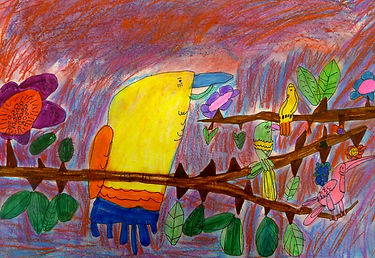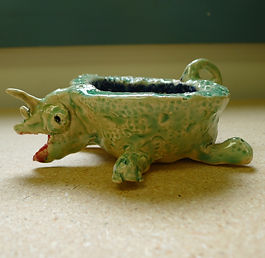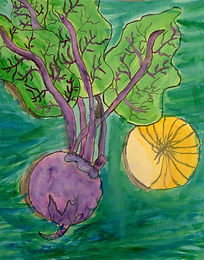Ms. Urieʻs Art Room

Curriculum Overview



Makenna Gr. 5, 2015 Jackson Chameleon Bowl
What Are We Learning?

Jetaime, Grade 3, 2015 Starry Night

2014 Grade 4, Recycled Sculpture Collaboration
Drawing, Painting, Ceramics, Sculpture, Printing & Art History
In Preschool and Kindergarten, the concentration is on experimenting with different modes of art and art materials including: markers, colored pencils, watercolor, tempura paint, and yes, even clay. They explore drawing, painting, printmaking, collage, sculpture and ceramics and are introduced to the first four elements of art: color, shape, line and texture.
In grades 1-3 we continue to experiment with the same materials and modes of art. But, now students begin to learn how to draw from reference, the basics of ceramics, and how to make art from recycled materials. Students get more practice with the basic elements of art; color, shape line and texture, and now form is added.
In grades 4-6 students get more practice with drawing from reference, and now still life as well. They continue practice with all the art elements, and now space and value are added to their skills.
Each year we build upon previous skills and experience, and learn about famous and contemporary artists. Some examples are Kandinsky, Yayoi Kusama, Kara Walker, Chagall, Hokusai, O'Keeffe, Van Gogh and Frida Kahlo.
Creativity, & 21st Century Skills
When creating visual art, we use all of the following Learning and Innovation Skills on a regular basis: Problem Solving/Critical Thinking, Creativity/Innovation, Communication, and Visual Literacy.
Every assignment is designed to give them practice with certain technical skills, as well as an opportunity to express their own creative voice. Creativity is named as a 21st Century Skill for students to learn because it is essentially on-going problem solving, which uses both logical and intuitive parts of the brain.
Visual Art, like music, dance, writing or speaking is another form of communication. Similar to writing, Visual Art synthesizes many different skill componants to create a final product and message.
Students complete individual projects regularly, but also collaborate on assignments from time to time. Students learn to consider, respect and include others' ideas and everyone is expected to contribute.